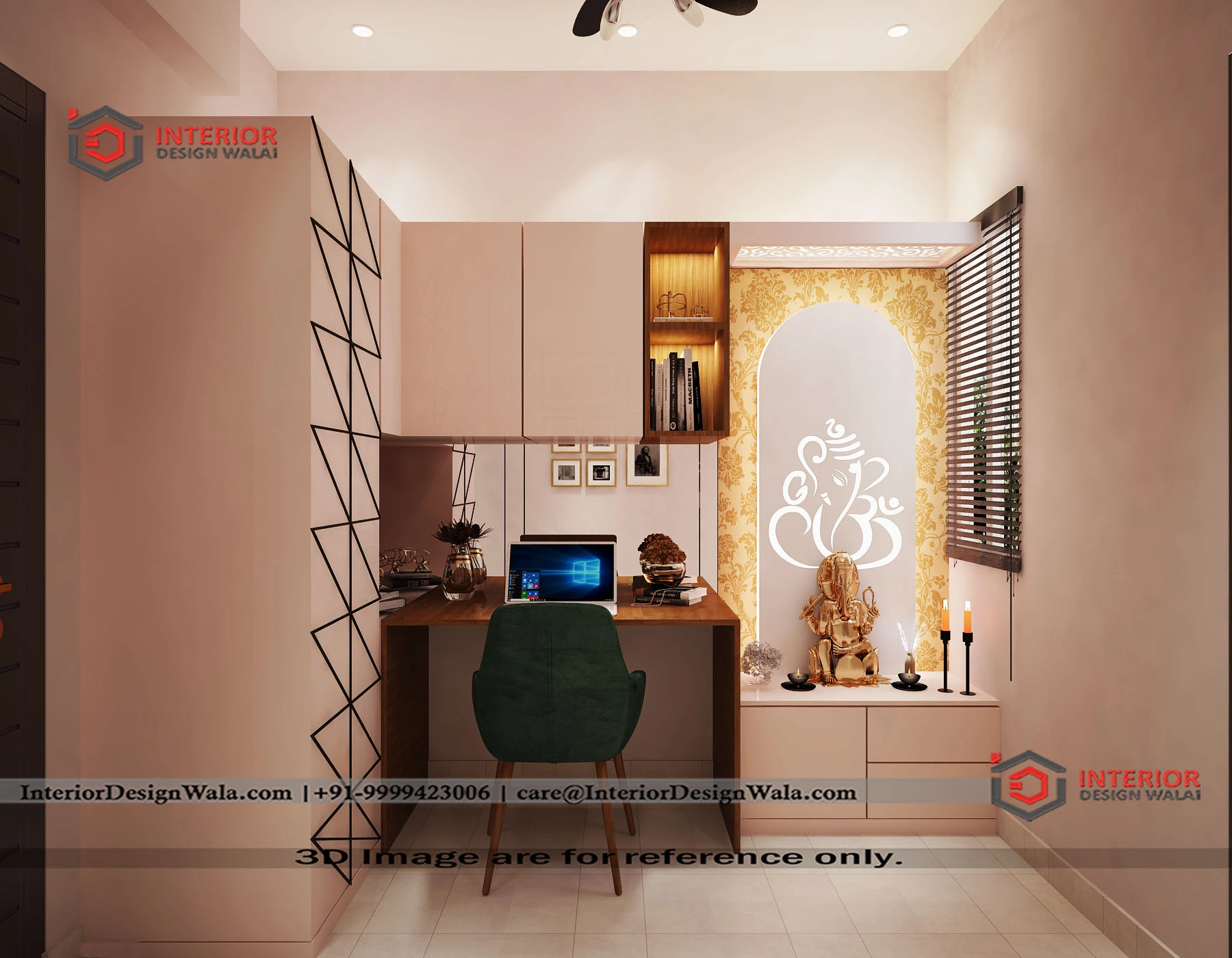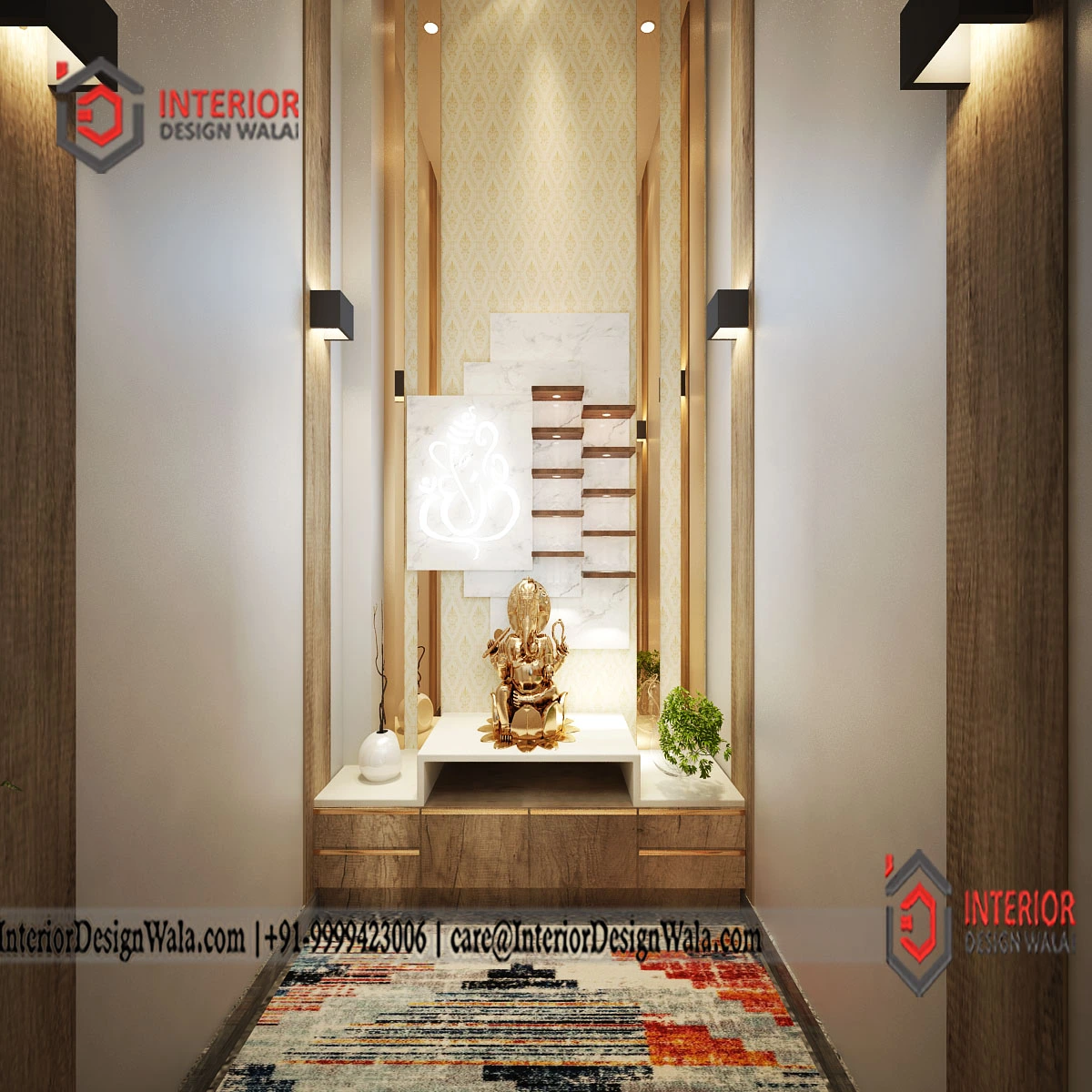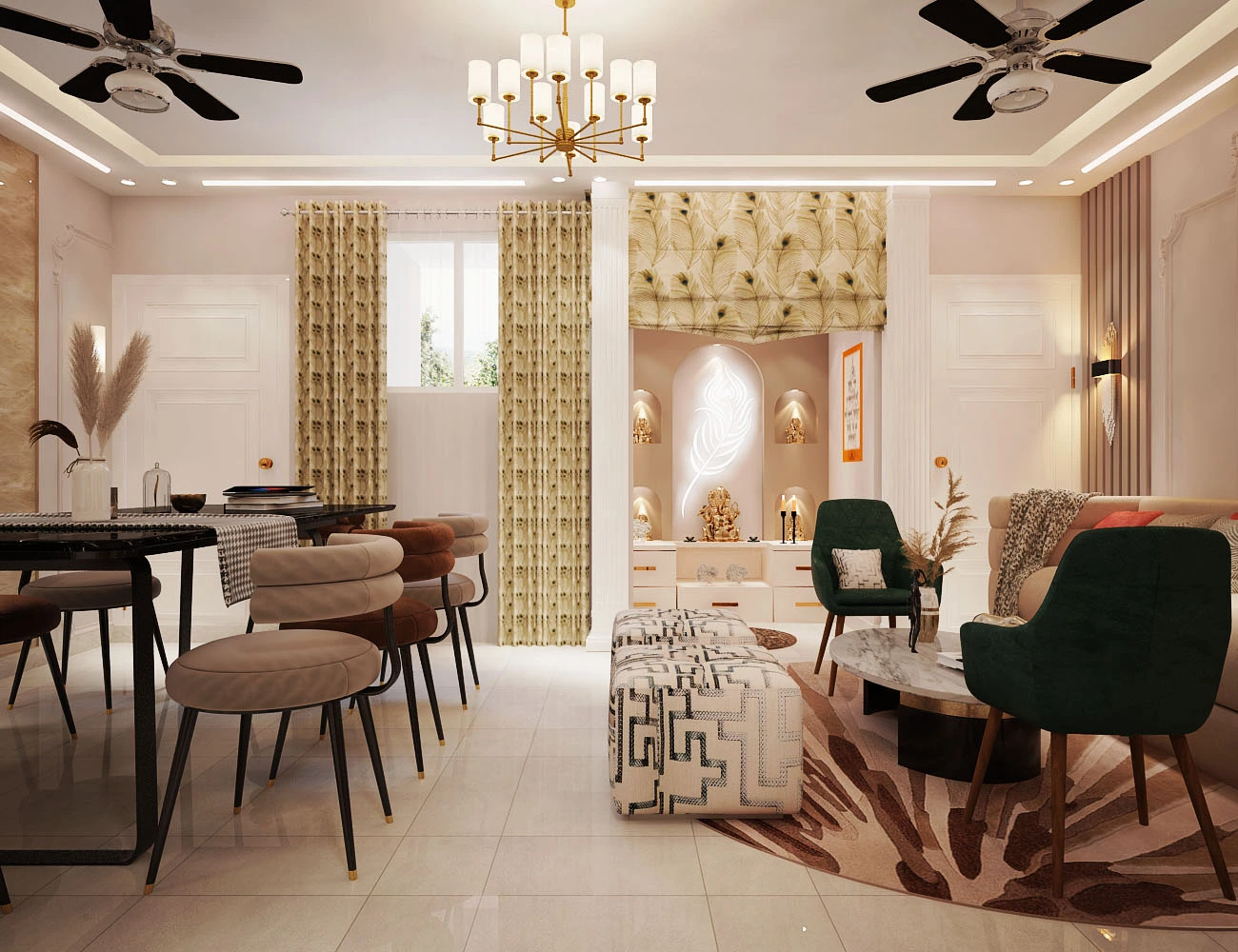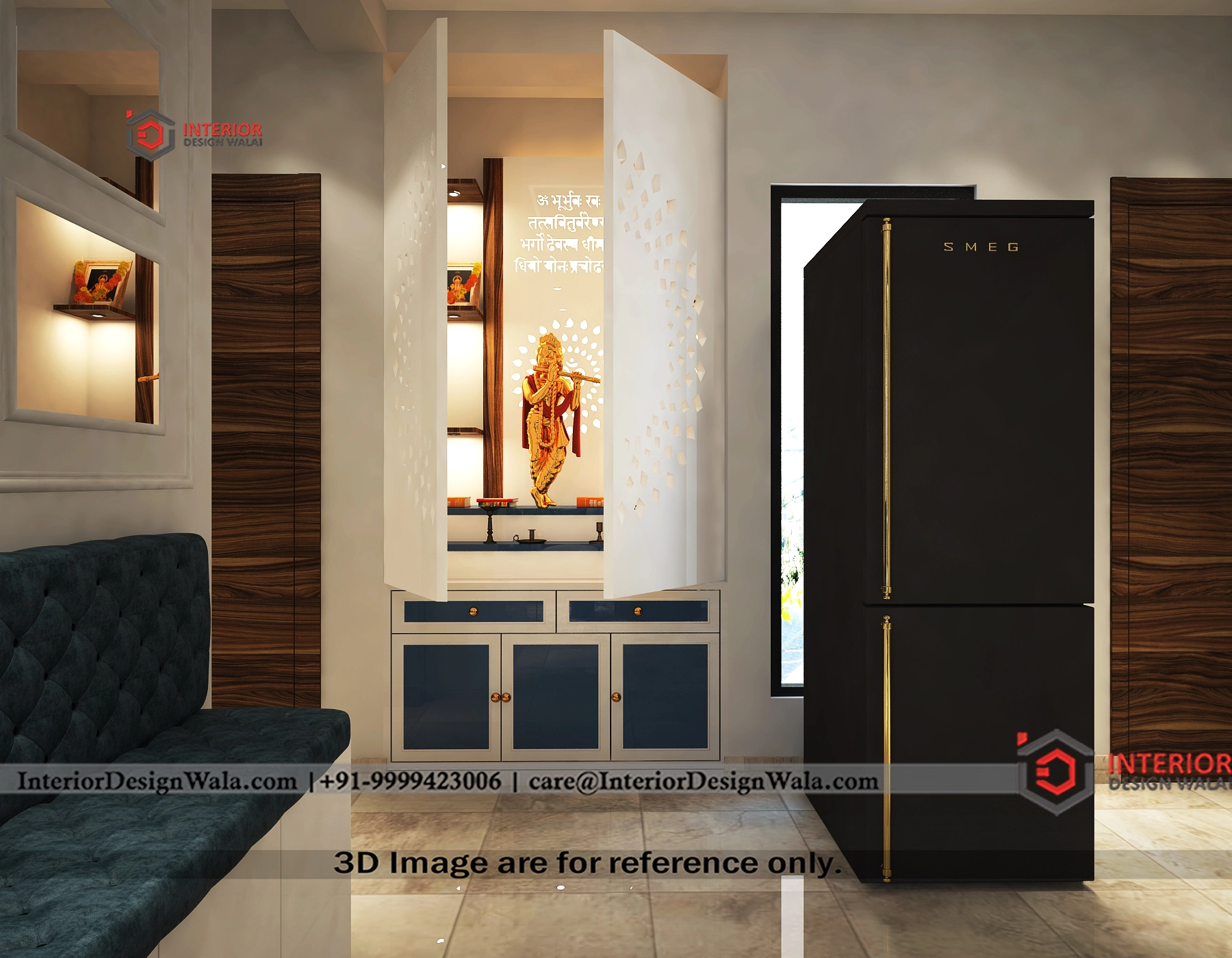Ideal place for pooja room
Bharat being a land of many cultures has also many religious beliefs. For example in Hinduism the north, east and the north est directions are considered best for making a pooja room due to the high positive energy of the rising Sun. In Islam, Qibla or the direction of Mecca is considered the most auspicious. Similarly in Christianity, the East direction is considered the direction of their almighty. Thus, as a professional interior designer, it is important to have in-depth knowledge of your client's backgrounds.
Technically there can be two types of pooja room designs i.e. closed and open. Where closed spaces are space-saving, compact and functional; the open pooja space provides an aesthetically pleasing area and allows large gatherings and detailed pooja space for pooja rituals, more privileged in Hinduism.
Closed pooja room designs for small spaces
Pooja room in the study room
If the study room doesn't have a toilet attached to it, you can make a small section for pooja in the study room. There can be various ways such as by making a temporary or permanent partition in the room, utilising the vertical walls for making pooja, you can also use blind corners of the room for making a pooja area by using wooden shelves, provided the corner is in the right direction.

Pooja room in the bedroom
However, as per Vastu, it is advised to avoid making pooja in bedrooms, if it's unavoidable, make sure to give a solid/semi-solid partition in the room for making pooja room in bedrooms. You can also simply convert the balcony space into a closed pooja room.

Open pooja room designs for big halls and common area
Pooja room in the living room
In the modern design system, where living space has become comparatively smaller than old days, making a pooja room in the living room is the new of blending modernness with traditional roots. You again try various options here, making an illusion of a closed partitioning hall, by placing a stylish earthen wooden temple etc.

Pooja room in the accent wall of the dining area
One another place to make a pooja room is the accent wall of your dining area where you can make a dedicated space for a pooja mandir. This will be an open worship area which will also be aesthetically pleasing while dining in. If the direction allows so, making a pooja space near the kitchen is considered good in Vastu.

Pooja room being an inseparable part of Indian homes always needs special attention where you cannot compromise going with sub standards. Since it’s directly connected to the roots, identity and cultural existence of an individual it is advised to go for an interior design consultation with a professional such as Interior Design Wala, where they have expertise in blending cultural beliefs into modern styles while keeping the essence of the space intact.
Q1. Which is the ideal direction for making a pooja room or placing a pooja temple?
A. According to Vastu Shastra, your pooja room must be in the northeast direction of the house.
Q2. Which colours can be used in making a pooja room design?
A. Always look for soft and neutral colours for the pooja room such as beige, pale white, peach, cream yellow etc. These colours help in making high concentration.
Q3. What is the ideal shape of a pooja mandir design?
A. According to Vastu a wooden rectangular or square mandir with a pyramid on top is considered the best mandir design.
Q4. Which is the best material for mandir design?
A. Wood and natural stones like marble are considered best and pious for making mandir designs as suggested by interior design wala.